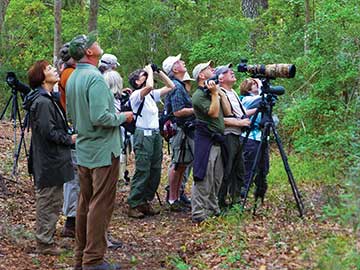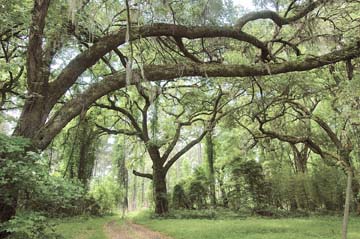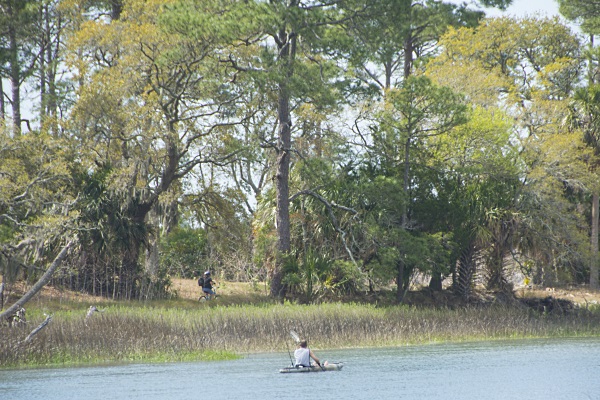Characterization of the Ashepoo-Combahee-Edisto (ACE) Basin, South Carolina
Tourism

Tourism is an important component of the economy in the ACE Basin. Tourism and entertainment in Colleton County (calculated as those working in restaurants, hotels, and recreational services) accounted for 8.6% of the businesses and 11.8% of the jobs in 1995. Tourism-derived income increased by 38% in the last 10 years, much of it in growth from restaurants, cafes, and hotels. Many rural communities and less developed regions, such as the ACE Basin, are typically unable (or unwilling) to support traditional, consumer-driven tourism. As a result, less developed areas must consider specialized niche markets, such as nature- and heritage-based tourism.
The South Carolina Department of Parks, Recreation, and Tourism (SCPRT) found that visitors to coastal South Carolina spent $747 million in 1996 and that the most popular activities were going to the beach, shopping, playing golf or tennis, and hiking/fishing/hunting. Mainly through efforts by the South Carolina Department of Parks, Recreation, and Tourism (SCPRT), the commercial nature-based tourism industry in South Carolina began to develop rapidly in the late 1980s. In 1995, the South Carolina Nature Based Tourism Association was created to promote sustainable development in the industry, promote voluntary self-regulation, and provide quality assurance through education.

The nature of heritage tourism (the emphasis on authenticity, history, nature, and vanishing lifestyles) and the scale of heritage tourism in South Carolina (2.7 million visitors annually who spend $581 million and support 13,570 jobs) dovetail with the characteristics and unique qualities, as well as economic needs, of South Carolina's ACE Basin. For this region, a place characterized as economically disadvantaged, with a rich historic and cultural past, and an exceptional natural resource base, heritage tourism offers a solid development opportunity for enhanced economic growth and resource protection.
The ACE Basin tourism industry should capitalize on its natural and cultural resources. Residents have enthusiastically supported nature and heritage tourism as an economic development path towards which to channel efforts and funds. They find that tourism can be economically beneficial to the region while also generating fewer detrimental effects on the environment than other economic activities. Some of the tourism assets in the ACE Basin are its two state parks, the National Estuarine Research Reserve, protected lands, festivals, and historic homes and attractions. Unique partnerships between landowners, conservation organizations, and government agencies have been influential in the major progress of conservation of the ACE Basin. The region, however, has yet to make full use of the ACE Basin's unique environmental, historical, and cultural heritage in order to achieve an economic advantage. The tourism task force developed several specific recommendations as part of increasing the tourism profile of the ACE Basin:
- Develop a visitor/interpretive center near U.S. Highway 17. Plans for a center were drawn up and then shelved, but 1998 has seen the renewal of interest in the visitors center concept.
- Support the Scenic Parkway Concept Plan and designation effort.
- Develop a consistent ACE Basin graphic identity that would apply to all brochures, maps, and other visitor materials
- Develop primary and secondary environmental and heritage education programs.
- Create a recreational river corridor by developing additional recreation opportunities along the Edisto River that might include additional campsites, a series of inns near some parts of the river, a canoe livery, and additional landings.

